As the old cliche goes, change is the only constant in life. Especially when we talk about a period as long as a decade. And true to that, the game of cricket also witnessed some major changes in the past decade.
In this article, we revisit the most significant ones to have been introduced in the past ten years.
#10. A curtailed ODI World Cup

When the World Cup was first introduced in 1975, it was meant to be a platform for cricketing excellence wherein the best would compete in a bid to achieve the pinnacle of cricketing glory. The objective was also to allow obscure cricketing nations to lock horns with the superpowers so as to expand the game's reach and transform it into a truly global sport.
The first four World Cups had eight participants each. However, with the passage of time and with the surge in popularity, the number of participants per world cup swelled. In the 2007, 2011 and 2015 World Cups, there were 16, 14, and 14 participants respectively. While this move helped cricket expand its reach, it affected the quality on display, at times owing to the sheer number of matches (quite a few of which were one-sided/non-consequential).
To maintain the sanctity of the World Cup as the pinnacle of cricketing glory, the ICC decided to cut down on the number of teams participating in the tournament. From the 2019 World Cup onward, only 10 teams are to contest in this showcase tournament. While this move has been welcomed by a few, it has also drawn sharp criticism from a few others. However, the ICC has put its foot down and confirmed that even the 2023 World Cup will be open to ten teams only
#9. Demerit Points
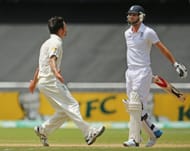
Cricket has always been known as the gentleman's game. On the playing field, players are always expected to uphold the spirit of the game and yet not compromise on the competitiveness. However, with the passage of time, as cricket has gotten more and more competitive, there's been a surge in the number of incidents involving altercations between players, undue aggression, and lack of respect for umpires and officials.
To arrest this rising trend, the ICC introduced a 'demerit points system' in September 2016. It supplements the ICC code of conduct by classifying on-field offenses into major and minor categories and associating demerit points with them. Over a two-year period, if a player accumulates 4 demerit points or more, it could result in his suspension.
The ICC further strengthened the system in October 2017 when it introduced red cards. These red cards were to be used by umpires to send off players if they threatened them, physically assaulted a player/umpire/spectator, or indulged in any other act of violence. Thankfully, however, no red cards have been issued in cricket till date.
#8. No runners
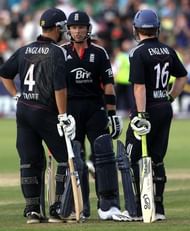
Cricket can be a grueling sport. In addition to battling the elements, players also have to battle their body's capacities in order to push for glory. With that in mind, law 25 of the MCC provisioned for a runner - a substitute player from the playing XI who can run for a batsman who's injured.
However, over a period of time, this law attracted a lot of controversies as opponent teams and captains felt that it was being misused to bring in runners for batsmen who were considered to be slow between the wickets. There was also a lot of back and forth with respect to the usage of runners when batsmen suffered from cramps
In order to steer away from this, the ICC altogether discontinued the practice of runners in cricket from October 2011. While it's been eight years since this rule was declared null and void, time and again there have been calls to reconsider this rule.
#7. Two new balls in ODIs
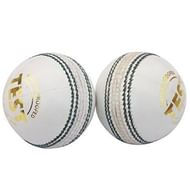
The cricket ball has had an interesting journey when it comes to ODI cricket. Earlier, just like the Test format, the ball used to be red to complement the white clothing. However, as the Kerry Packer-led revolution in the late 1970s brought in colored clothing to ODIs, the color of the ball changed from red to white.
However, it was not until 1992 that the white ball made its debut at the World Cup. At that time, the ICC stipulated the usage of two new white balls from both ends. This rule though underwent several modifications and at the start of the decade, there was a provision for a change in the ball after the 34th over.
The use of such an old ball meant that reverse swing could be expected, which kept batsmen on their toes. Much to everybody's surprise, however, the ICC rolled back the years in 2011 and decided to revert to the two new ball rule from 1992. As this moved ringed in several high-scoring matches at the peril of bowlers, it drew the ire of the likes of Sachin Tendulkar, Dale Steyn, and Mahela Jayawardene.
#6. LED Stumps
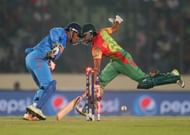
Be it covered pitches, colored clothing, white balls, or cricket under lights, the Australians have been at the forefront of most cricketing innovations. Just when the world thought there couldn't be any more innovations from Down Under, they pulled another one out of the hat by bringing in LED stumps in the 2012 edition of the Big Bash League.
Soon, this innovation gained steam and it was adopted across all major T20 franchise leagues the world over. The ICC got these stumps into the cricketing mainstream as well, using them at the 2014 World T20 tournament.
These stumps solve an otherwise tricky problem that occurs when the bails are dislodged off a conventional set of stumps. At times, it becomes difficult to identify the exact moment when the bails come off the grove. However, given that these stumps and bails glow at the slightest contact with the ball, run-out and stumping decisions have become much easier for the third umpire.
#5. Numbered jerseys in Tests

Picture this. You're an ardent fan of your team. You've always longed to see them in action on the field of play. You pay your hard-earned money to go and see one of their games. But alas, thanks to the sun and the lack of names on their shirts, you are not able to identify your heroes.
While this problem had a solution in ODI and T20 cricket, the same was not applicable for Test cricket. The ICC took note of this and decided to bring in numbered shirts in Test cricket effective from the 2019 edition of the Ashes. The move hasn't really been welcomed by a few former greats of the game, but is more or less likely to stay, given that it has gone down well with the fans.
#4. Auto no-ball
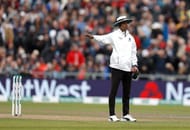
When a sport is played at the highest level, the margin for error is very less. One bad call here and there can swing fortunes significantly. However, everybody on the field, including the players and the officials, is human and hence, errors are inevitable.
A prime example of this was seen during the 1st Test between Australia and Pakistan at the Gabba this year. In the first two sessions of the 2nd day, the on-field umpires failed to spot as many as 21 no-balls.
Hence, akin to LBW and caught behind decisions, the ICC decided to bring in technology to take the howler out. Starting with the T20I series between India and West Indies, the auto no-ball rule was introduced. The on-field umpires are to no longer monitor on-field no-balls and that task now lies with the third umpire.
#3. Concussion substitutes

Late in 2014, Australia's Phil Hughes succumbed to a head injury sustained while battling a vicious bouncer during a Sheffield Shield match. The incident left the entire cricketing world shell-shocked. The ICC took note of the incident and rolled out a trial for concussion substitutes in the Australian and English domestic circuits.
From the Ashes series (that started from the 1st of August this year), the ICC introduced this rule in all men's and women's international matches. The rule allows a concussed player to be replaced by a 'like-for-like' replacement in the playing XI. However, the replacement must be approved by the match referee.
During the final day of the 2nd Ashes test this year, Australia's Steve Smith became the first international player to be replaced when he showed delayed signs of concussion after being hit by a Jofra Archer bouncer. Marnus Labuschagne was his like-for-like replacement in the playing XI.
#2. World Test Championship

Most international players will say that they consider Test cricket to be the ultimate form of cricket and that they'd do anything to leave their mark in that format. However, other than a few high-profile bilateral series, there wasn't any standout tournament that could have been considered to be the pinnacle of Test cricket.
The ICC finally rectified this by introducing the ICC World Test Championship this year. The top nine of the twelve test playing nations are part of this tournament, which will be played over a period of two years. Each team will be contesting a total of six test series -- three to be played at home and three away. Each series will constitute 120 points.
The number of points per match will be based on the number of matches in a series. If a series has only two matches, each game will carry 60 points whereas, in a five-match series, each game will carry 24 points. What the test championship has done (and is also likely to do further) is that it has added context to every match and every series being played. For those crucial points, teams will look to go for the kill, thereby bringing excitement to Test cricket.
#1. Day-night Tests

The advent and the rapid advance of T20 cricket since the turn of the century had left Test cricket gasping for breath. Barring a few high-profile ones, most Test matches witnessed a scanty attendance as more and more spectators were getting attracted by the glitz and blitz of the T20 format.
That's when the ICC thinktank got together and chalked out the idea of Day-night Tests in a bid to win over the audiences again. The thought process was very simple: if the day's play was to begin post-noon and continue beyond dusk, it would allow most of the students and the working population to make their way to the ground to catch some part of the action.
The lights, the atmosphere, and the use of a pink ball have only added to the mystique of this experiment. What's more, is that even the results have gone in favor of this little tweak. There have been eleven Day-night Tests so far and none of them has been a draw. India recently hosted its first Day-night Test vs Bangladesh at the Eden Gardens and it was a massive hit. It can, therefore, be safely said that Day-night Tests are here to stay.
Follow IPL Auction 2025 Live Updates, News & Biddings at Sportskeeda. Get the fastest updates on Mega-Auction and cricket news
